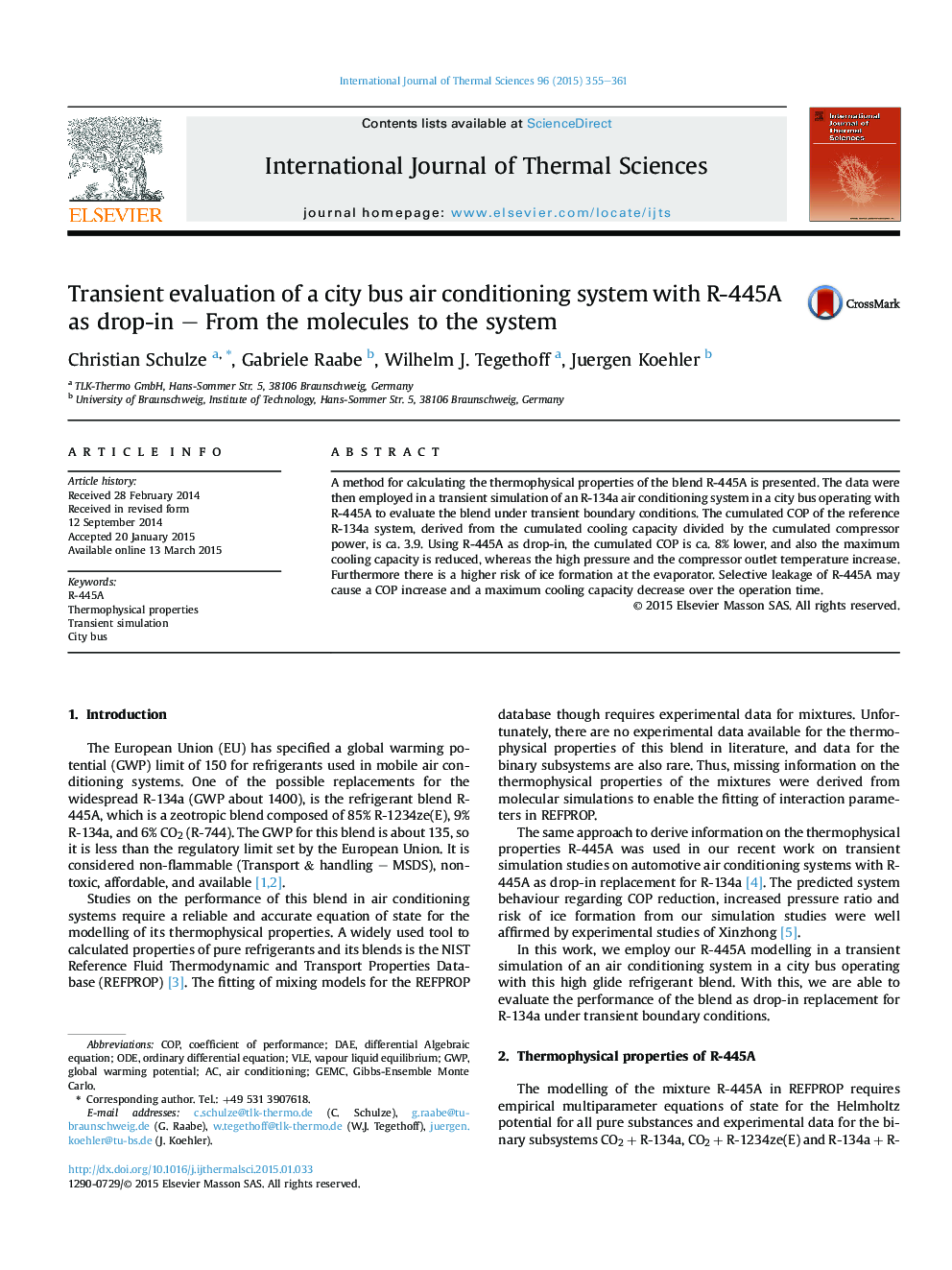| Article ID | Journal | Published Year | Pages | File Type |
|---|---|---|---|---|
| 668045 | International Journal of Thermal Sciences | 2015 | 7 Pages |
•We present a method to calculate the properties of R-445A.•We investigate the scenario to use R-445A as drop-in for R-134a air conditioning systems.•R-445A causes increase of pressure levels and a higher risk of ice formation.•Selective leakage of R-445A has influence on the system performance.
A method for calculating the thermophysical properties of the blend R-445A is presented. The data were then employed in a transient simulation of an R-134a air conditioning system in a city bus operating with R-445A to evaluate the blend under transient boundary conditions. The cumulated COP of the reference R-134a system, derived from the cumulated cooling capacity divided by the cumulated compressor power, is ca. 3.9. Using R-445A as drop-in, the cumulated COP is ca. 8% lower, and also the maximum cooling capacity is reduced, whereas the high pressure and the compressor outlet temperature increase. Furthermore there is a higher risk of ice formation at the evaporator. Selective leakage of R-445A may cause a COP increase and a maximum cooling capacity decrease over the operation time.
Graphical abstractFigure optionsDownload full-size imageDownload as PowerPoint slide
